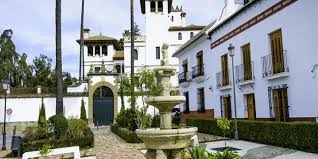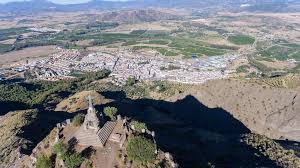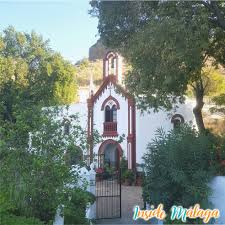Pizarra
Pizarra is a municipality located in the heart of the Guadalhorce Valley in the province of Malaga, Andalusia, Spain. It's one of the "white villages" (pueblos blancos) of the region, known for its agricultural roots, natural beauty, and a growing appeal for those seeking a more authentic Spanish lifestyle away from the bustling coast.
Location and Vibe:
-
Strategic Position: Pizarra is well-connected, situated approximately 30-40 kilometers from Malaga city and its international airport. It benefits from good road access (via the A-357) and a train station, connecting it to Malaga, Álora, and even further afield.
-
Heart of the Guadalhorce Valley: This valley is often called "the garden of Malaga" due to its highly fertile land, watered by the Guadalhorce River. Pizarra sits amidst a landscape dominated by citrus groves (especially oranges and lemons), olive trees, almond trees, and various fruit and vegetable crops
-
Authentic Spanish Life: Pizarra offers a genuine slice of rural Andalusian life. It's a working town with a strong community feel, where traditional customs and local fiestas are still very much alive. You'll find local shops, traditional bars, and a relaxed pace of life.
-
Population: Pizarra has seen steady population growth, with over 10,000 inhabitants as of 2024, indicating its increasing popularity as a place to live.
History and Heritage:
While its urban center largely dates back to the late 15th century after the Christian Reconquest, the area around Pizarra has a much longer history, with archaeological findings from the Bronze Age and Roman times.9
- Roman Era: Vestiges like the "cisterna del Bañadero de la Reina" (Queen's Bath cistern) and fragments of marble friezes point to a Roman presence.
- Moorish Influence: The area was known for its agricultural importance during the Al-Andalus period.
- Reconquest and Founding: The town of Pizarra itself originated after the Catholic Monarchs granted lands to Don Diego Romero in the late 15th century, in recognition of his bravery during the conquest of Álora.
- Agricultural Development: The construction of bridges over the Guadalhorce River in the 19th century and the arrival of the railway (connecting Cordoba to Malaga) significantly boosted Pizarra's economy and population growth, largely centered around its agricultural produce.
Economy:
Pizarra's economy is deeply rooted in agriculture, specifically:
- Citrus Fruits: Oranges and lemons are major crops.
- Olives and Almonds: Cultivated on dry land.
- Subtropical Fruits: Increasingly, avocados and mangoes are grown with modern irrigation systems.
- Livestock: Pig and chicken farms are also significant.
-
Supporting Industries: There are related industries like feed and flour factories, as well as some textile and metal carpentry workshops.
- Rural Tourism: In recent years, Pizarra has been increasingly embracing rural tourism, leveraging its natural beauty, outdoor activities, and authentic charm to attract visitors.
What to See and Do:
While not a major tourist destination in the same vein as coastal resorts, Pizarra offers a wealth of experiences for those seeking cultural immersion and outdoor adventure:
-
"El Santo" (Sacred Heart of Jesus Monument): Perched atop a mountain, this bronze and cast iron monument offers incredible panoramic views of the entire Guadalhorce Valley. There's a popular hiking trail leading up to it.
- Church of San Pedro Apóstol: The main church in the town, featuring notable elements like a 17th-century baptismal font and a beautiful altarpiece.
- Hermitage of Our Lady of Fuensanta (Ermita de Nuestra Señora de la Fuensanta): A picturesque hermitage offering further views and a serene atmosphere.
-
Municipal Museum of Pizarra: Located in the Cortijo Casablanca, this museum showcases the town's rich archaeological and ethnographic heritage, as well as works by the painter Gino Hollander.
- Guadalhorce Bridges: Historic bridges that played a crucial role in the town's development.
- Hiking and Nature: Pizarra is a fantastic base for outdoor activities. There are numerous approved hiking trails, including sections of the Gran Senda del Guadalhorce, offering routes through diverse landscapes. The "Raja Ancha" recreational area is a popular spot for relaxation and enjoying nature.
-
Local Gastronomy: Enjoy traditional "Valle del Guadalhorce" cuisine in local restaurants and bars.17 Look out for dishes made with fresh, local produce.
- Fiestas: Experience authentic Spanish fiestas throughout the year.
Property in Pizarra:
Pizarra offers a range of property options, often at more competitive prices than coastal areas and Málaga. It is increasingly becoming attractive to younger people who cannot afford Málaga prices.
- Townhouses (Casas de Pueblo): Traditional, charming houses in the village center.
- Country Houses (Fincas/Cortijos): Rural properties with land, often used for agriculture (olive groves, citrus trees), and sometimes with private pools and outbuildings.These are popular for those seeking more space and tranquility.
- Villas and Chalets: More modern independent homes.
Its good access to Malaga, the airport, and proximity to natural attractions like El Caminito del Rey make Pizarra an increasingly attractive option for both permanent residents seeking a peaceful life and those looking for a holiday home with an authentic Spanish feel.




